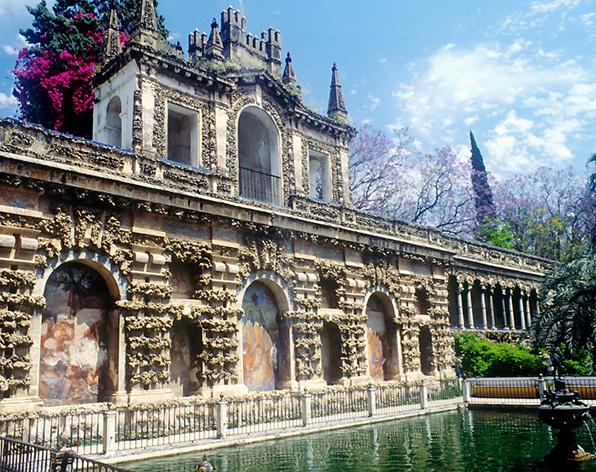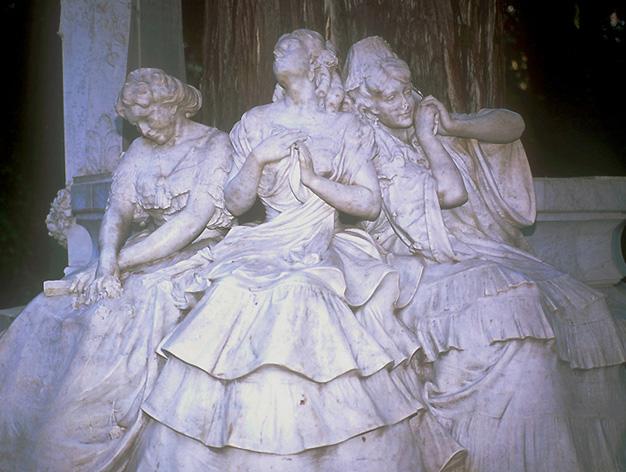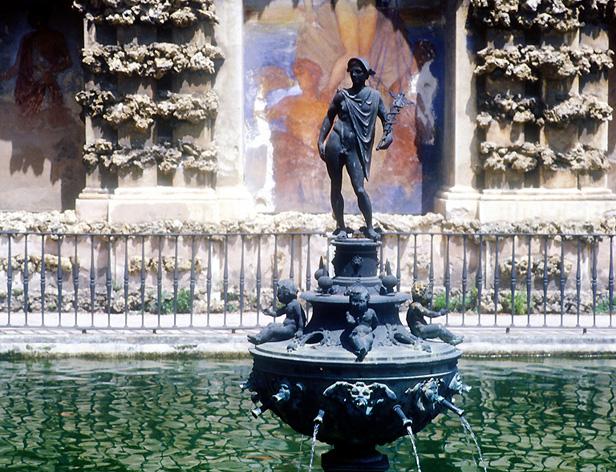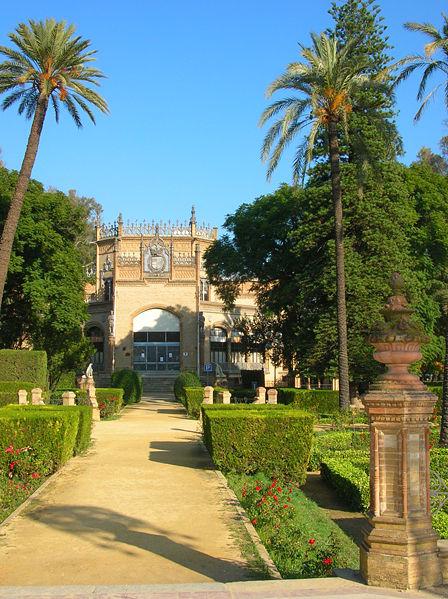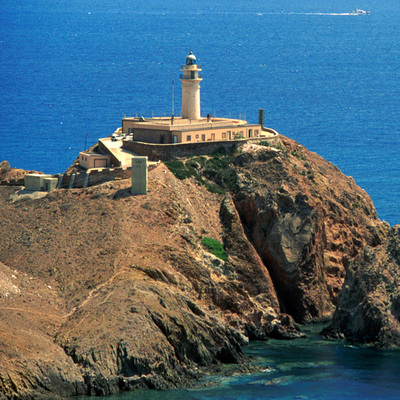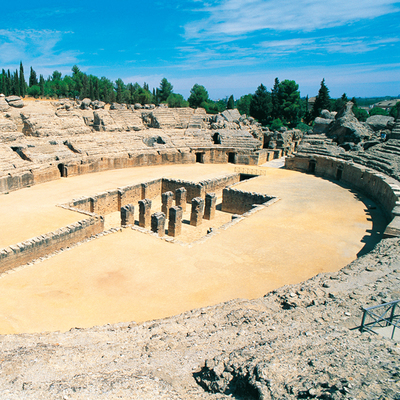Gardens of Sevilla
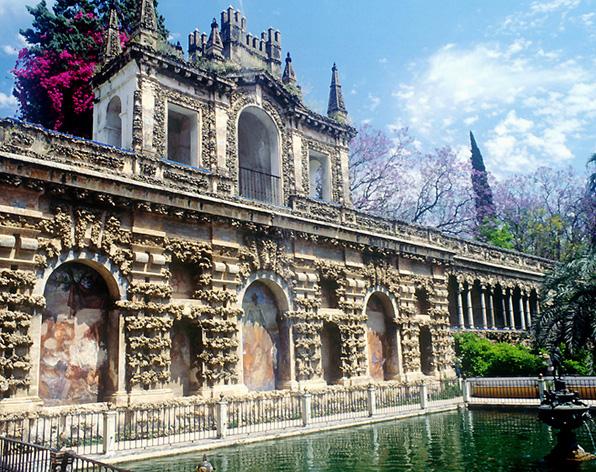
In Seville, the oldest extant garden is the Patio de los Naranjos (Courtyard of the Orange Trees), which belonged to the old mosque on which the Cathedral now stands.
The Almohade garden in la Casa de Contratación is of the same period (12th C.). It is right in the middle of the city, and has been recently restored, with the anachronism of some handsome American palm trees.
The garden of the Alcázar has a good number of styles in a relatively small space. Here, we can admire Mudejar gardens, such as the Patio de Doña María de Padilla, Patio del Yeso or the garden of La Galera, or gardens of the Renaissance, such as the garden of La Danza, of Las Damas and those surrounding the pavilion of Charles V, which include the myrtle and cypress maze.
There is a landscaped garden, the English Garden, and, from the beginning of this century, the Garden of the Poets and the Garden of Vega Inclán. Among the more remarkable species found here are several Floss-silk trees (Chorisia speciosa), with a large specimen beside the Charles V pavilion, and the Gingko bilobas and the Tabebuia in the English Garden.
Another example of an enclosed garden is that of the tower of Don Fadrique, built over old orchards. The Romantic garden is represented by the Garden of Las Delicias, with a good example of the Phoenix reclinata palm tree that has several branches, and many Citrus myrtifolia, Moorish orange trees. Other examples are the Cristina Gardens and the gardens of the Casa Rosa (now the headquarters of the Regional Ministry for the Environment), where there is an avenue of Cycas revoluta.
At the beginning of the 20th century, a new style of garden is born, of Hispano-Arabic inspiration. For example, the Maria Luisa Park, designed mostly by Jean Nicolas Forestier, the Murillo Gardens along the outside of one of the walls of the Alcázar, and the Catalina de Ribera Avenue.
The gardens of La Lonja and the old Tobacco factory (now a university), were also created during this century, as well as the Paseo de la Palmera and the various private gardens in that avenue, many of which have interesting plants.
Among present-day gardens, we may point to the Parque de los Principes, and those of La Isla de la Cartuja, which include the old orchard of the monastery with a very ancient sapodilla. Nearby, the modern layouts for Expo´92, such as the Gardens of the Guadalquivir, representing a summary of the history of gardening, and the American Garden, built exclusively with plants from the Americas that are useful to man.
Important elements in the urban landscape of Seville are its squares and patios. The squares of Cristo de Burgos and El Museo have enormous specimens of Ficus dealbata, Plaza del Duque has gigantic Grevillea robusta (fire trees), San Leandro square has a handsome Ficus retusa (Indies laurel) and Santa Cruz square has a specimen of Feijoa sellowiana. The best patios are found in the Barrio de Santa Cruz (the old Jewish quarter). One of the ones that can be visited is that of Los Venerables, with a pretty sunken courtyard and central fountain. Palace gardens are likewise interesting, such as Casa de Pilatos and Las Duenas.
Outside Seville, in Castilleja de Guzmán, there is an attractive garden in the Colegio Mayor Santa María del Buen Aire, designed by Forestier. In Castilleja de la Cuesta, you will find El Carambolo Arboretum. In Dos Hermanas, there are the Alquería del Pilar and the Hacienda de la Torre de Doña María.
Among the many country houses, the most outstanding is the Hacienda Benazuza in Sanlúcar la Mayor, now a hotel, with a most beautiful garden. In the province of Huelva, the garden of Villa Onuba stands out at Fuenteheridos, with good samples of Spanish fir and Sequoia. Riotinto has curious English-style houses and gardens.
At La Rábida, the landscaped gardens round the monastery and in the cloisters are attractive, and in Moguer, there are the gardens and patios of the old convent of St. Claire and the patios of the house of the poet Juan Ramon Jiménez.

